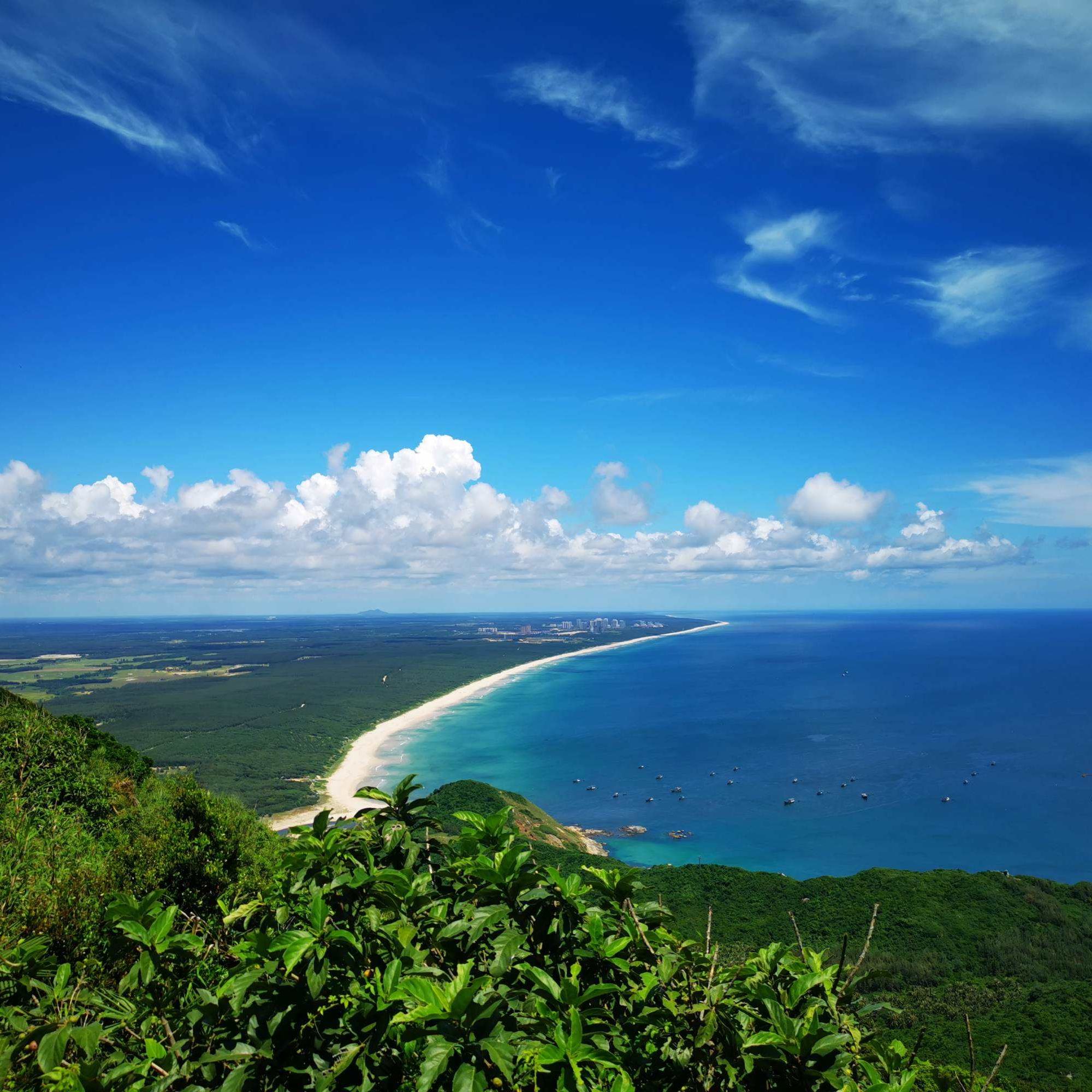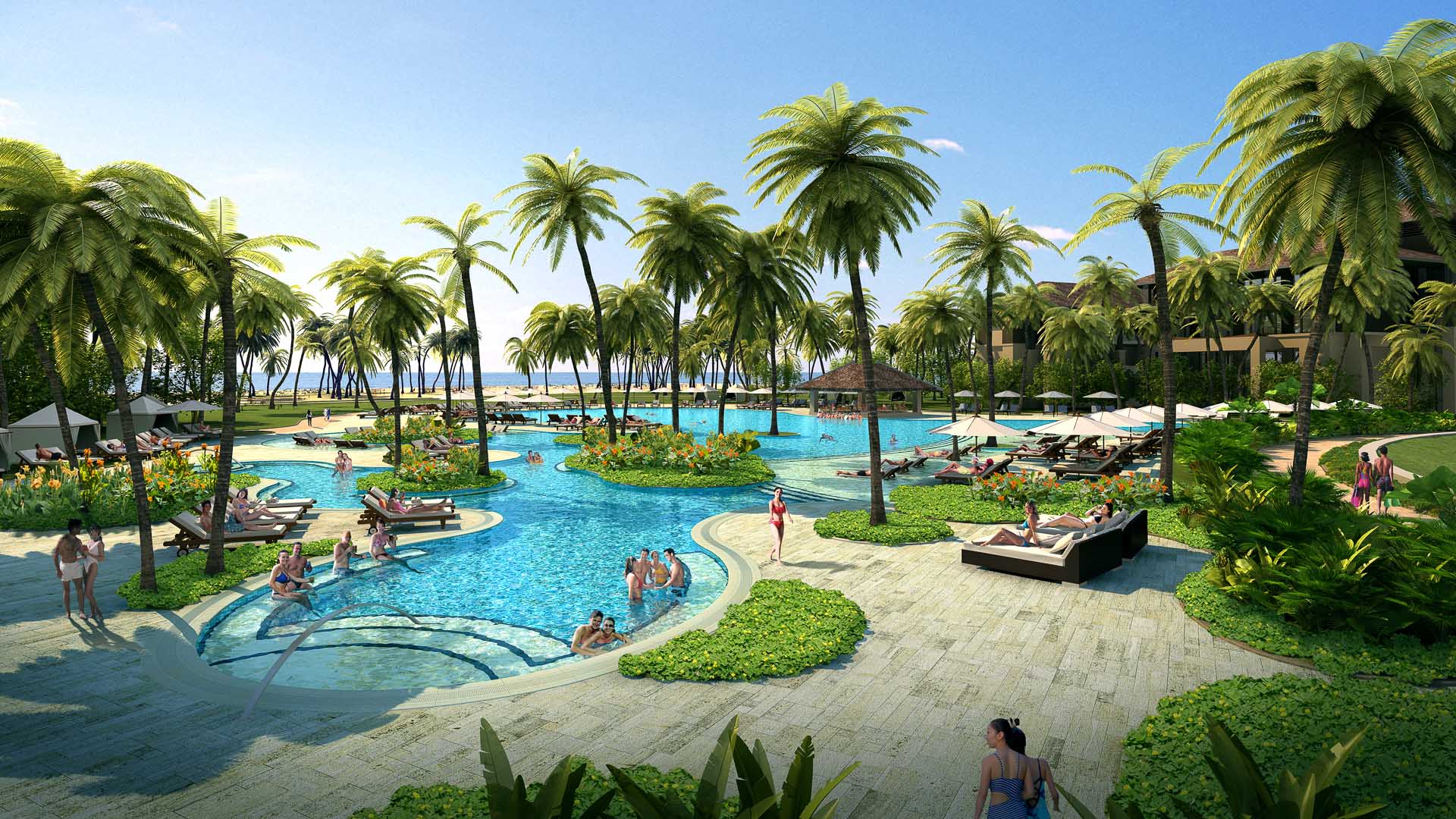


海南省,简称琼,是中华人民共和国唯一完全位于热带的省份,也是一个海洋省份和岛屿省份,亦是中国海洋面积最大、陆地面积最小的省,省会位于海口市。户籍人口约867.15万人,常住人口不到1000万,每年冬季会有大量候鸟型流动人口居住[1]。
海南省在地理上可分为海南本岛和南海诸岛(海南离岛),其中本岛位于海南省的西北部,大致等于海南岛及其领海附属岛屿,与周边国家没有领土争议;离岛位于海南省中北部至南部,大致等于三沙市法定管辖的中沙群岛、西沙群岛和南沙群岛[注 1],与周边国家尚存领土争议,中华人民共和国实际控制西沙和中沙全部岛礁,而没有实际控制南沙全部岛礁。
海南全省陆地总面积约3.54万平方公里,其中本岛陆地面积3.39万平方公里,约占海南省陆地面积的95%;全省海洋总面积约220万平方公里,南海诸岛领海面积210万平方公里,约占海南省海洋面积的95%[2]。
1988年,全国七届人大一次会议通过决议,撤销广东省海南行政区,设立海南省和海南经济特区,海南省成为中华人民共和国第30个省级行政区,也是至今为止中华人民共和国最年轻的省份。2008年,中华人民共和国国务院同意海南建设国际旅游岛,2018年后又批准海南建设自由贸易港[3]。
Hainan (chinesisch 海南省, Pinyin Hǎinán Shěng)  Aussprache?/i ist seit 1988 eine Provinz im Süden der Volksrepublik China, die aus verschiedenen Inseln besteht. Zuvor war die südlichste Provinz der Volksrepublik ein administrativer Teil der Provinz Guangdong (Kanton) gewesen. Die größte der Inseln heißt ebenfalls Hainan. Häufig fällt im Zusammenhang mit Hainan auch die Bezeichnung „Hawaii von China“.[1] Die Insel Hainan (海南島 / 海南岛, Hǎinán Dǎo) liegt im Südchinesischen Meer und ist über die ca. 15 bis 30 km breite und durchschnittlich 44 m tiefe Hainanstraße (Straße von Qiongzhou) vom chinesischen Festland abgetrennt und ist – nach Taiwan – mit 34.380 km² die zweitgrößte Insel der chinesisch geprägten Welt und die größte der Volksrepublik China. Die Hauptstadt ist Haikou.
Aussprache?/i ist seit 1988 eine Provinz im Süden der Volksrepublik China, die aus verschiedenen Inseln besteht. Zuvor war die südlichste Provinz der Volksrepublik ein administrativer Teil der Provinz Guangdong (Kanton) gewesen. Die größte der Inseln heißt ebenfalls Hainan. Häufig fällt im Zusammenhang mit Hainan auch die Bezeichnung „Hawaii von China“.[1] Die Insel Hainan (海南島 / 海南岛, Hǎinán Dǎo) liegt im Südchinesischen Meer und ist über die ca. 15 bis 30 km breite und durchschnittlich 44 m tiefe Hainanstraße (Straße von Qiongzhou) vom chinesischen Festland abgetrennt und ist – nach Taiwan – mit 34.380 km² die zweitgrößte Insel der chinesisch geprägten Welt und die größte der Volksrepublik China. Die Hauptstadt ist Haikou.
海南省(かいなんしょう、中国語:海南省、拼音:Hǎinán Shěng、英語:Hainan)は、中華人民共和国最南部の省。海南島と付属の島嶼からなる。省都は海口市。
中国広東省雷州半島の南に位置する海南島と南シナ海の西沙諸島、南沙諸島、中沙諸島からなる。海南島以外の所属については近隣諸国との領土問題がある。西はトンキン湾を隔ててベトナムとなる。
海南島の北部は亜熱帯、南部は熱帯に属し、バナナ、ココヤシ、コショウなどの熱帯作物の栽培が盛んである。熱帯に属する三亜市周辺の海岸は、年中海水浴に適した気候であり、俗に『中国のハワイ』ともいわれ、海浜リゾートを中心とした観光業が盛んである。瓊海市にあるリゾート地ボアオ(博鰲)では2001年以降、毎年ボアオ・アジア・フォーラムが開催されている。
Hainan ( 海南) is the smallest and southernmost province of the People's Republic of China (PRC), consisting of various islands in the South China Sea. Hainan Island, the largest and most populous island under PRC administration,[note 1] makes up the vast majority (97%) of the province. "Hainan", the name of the island and the province, literally means "south of the sea", reflecting its position south of the Qiongzhou Strait, which separates it from Guangdong's Leizhou Peninsula and the rest of the Chinese mainland.
海南) is the smallest and southernmost province of the People's Republic of China (PRC), consisting of various islands in the South China Sea. Hainan Island, the largest and most populous island under PRC administration,[note 1] makes up the vast majority (97%) of the province. "Hainan", the name of the island and the province, literally means "south of the sea", reflecting its position south of the Qiongzhou Strait, which separates it from Guangdong's Leizhou Peninsula and the rest of the Chinese mainland.
The province has land of 33,920 square kilometers (13,100 sq mi), of which Hainan the island is 32,900 square kilometers (12,700 sq mi) and the rest is over 200 islands scattered across three archipelagos: Zhongsha, Xisha and Nansha. It was part of Guangdong from 1950–88, after which it resumed as a top-tier entity as almost immediately made the largest Special Economic Zone by Deng Xiaoping as part of the Chinese economic reform.
The Li (or Hlai) people, a Kra–Dai-speaking ethnic group, are longest-native to the island and comprise 15% of the population. Their native languages include the Hlai languages. They are recognized by the Chinese government as one of the country's 56 ethnic groups. The Han population, who compose a majority of the population at 82%, speak a wide variety of languages including Mandarin, Min Hainanese, Yue Chinese, Lingaoese or Hakka Chinese.[5]
There are ten major cities and ten counties in Hainan Province. The capital of the province is Haikou, on the northern coast of Hainan Island, while Sanya is a well-known tourist destination on the southern coast. The other major cities are Wenchang, Sansha, Qionghai, Wanning, Wuzhishan, Dongfang and Danzhou.
According to China's territorial claims, several territories in the South China Sea, including the Spratly Islands (Nansha) and Paracel Islands (Xisha),[6] are notionally administered under Sansha city of the province.
On June 1, 2020, a large-scale plan was announced by the Chinese government to transform the entire island province into a free trade port (FTP), with the aim of turning it into the largest special economic zone in China.[7][8] The island is also China's first blockchain testing zone that was officially started in 2019.[9]
Hainan (chinois : 海南 ; pinyin : Hǎinán ; litt. « au sud de la mer », prononcé : /xài.nǎn/ Écouter) est une île tropicale au sud de la Chine. Hainan est une province au sud de la République populaire de Chine dont le chef-lieu est Haikou. La population de l'île, dont la superficie est de 35 354 kilomètres carrés, atteint 9,2 millions habitants fin 2016 dont une minorité significative de Li (15 %), les occupants originels de Hainan. La superficie de cette ile est équivalente à la superficie de la Belgique et du Luxembourg réunis. Il s'agit de la plus petite province du pays. Le gouvernement chinois a rattaché à cette province les petites îles de mer de Chine méridionale dont elle revendique la souveraineté.
L'économie de l'île a longtemps été dominée par l'agriculture (riz, caoutchouc et autres produits tropicaux) ainsi que la pêche et l'aquaculture. Le secteur secondaire et tertiaire se sont développés récemment grâce à des incitations notamment par la création d'une zone économique spéciale, qui permet à l'île de bénéficier d'avantages fiscaux permettant attirer les investissements étrangers. Hainan, qui bénéficie d'un climat agréable est une destination touristique très prisée, souvent surnommé le « Hawaï chinois ». L'île héberge la principale base de sous-marins nucléaires chinoise ainsi que la base de lancement de Wenchang, inaugurée en 2014 et qui est amenée à jouer un rôle central dans le programme spatial chinois.
Hainan è una provincia della Cina, che si trova nella parte più meridionale del paese. Fu l'ultima regione della Cina conquistata dai comunisti nella guerra civile nel maggio 1950. Il nome deriva da 海 hǎi, "mare" e 南 nán, "sud", e significa "sud del mare".
È composta da alcune isole, la più estesa delle quali si chiama Hainan (Hainan Dao), da cui il nome della provincia (quando si parla di Hainan in Cina, normalmente ci si riferisce all'isola). Quest'isola si trova nel golfo del Tonchino, al largo delle coste vietnamite. È di circa un terzo più estesa della Sicilia e si trova alle coordinate 35° 8'N - 20° 10'N di latitudine e 108° 37'E - 117° 50'E di longitudine. Di origine vulcanica, presenta spiagge basse contraddistinte da una sabbia finissima di color bianco, e, all'interno, una lussureggiante vegetazione di tipo subtropicale sostanzialmente intatta.
La capitale della provincia nonché il maggiore centro economico è Haikou; un'altra città importante è Sanya, rinomata per essere una località turistica molto apprezzata.
Hainan léase [Jái-Nán](![]() escuchar) (en chino simplificado, 海南省; pinyin, Hǎinán shěng, lit: mar del sur) es una de las veintidós provincias que, junto con las cinco regiones autónomas, cuatro municipios y dos regiones administrativas especiales, conforman la República Popular China. Su capital es Haikou. Hainan está formada por diferentes islas —siendo la mayor de ellas la isla homónima de Hainan— situadas en el mar de China Meridional, en la parte más meridional del país, a 240 kilómetros al este de Vietnam.
escuchar) (en chino simplificado, 海南省; pinyin, Hǎinán shěng, lit: mar del sur) es una de las veintidós provincias que, junto con las cinco regiones autónomas, cuatro municipios y dos regiones administrativas especiales, conforman la República Popular China. Su capital es Haikou. Hainan está formada por diferentes islas —siendo la mayor de ellas la isla homónima de Hainan— situadas en el mar de China Meridional, en la parte más meridional del país, a 240 kilómetros al este de Vietnam.
La isla de Hainan tiene una extensión de 34 000 kilómetros cuadrados y una población de 8,6 millones de personas (2010). En la zona habitan mayoritariamente miembros de las etnias miao y li, con rasgos muy parecidos a los vietnamitas. La religión mayoritaria es el budismo, seguida del islam y el cristianismo.
La isla fue conquistada por las tropas del emperador Qin Shi Huang aunque el ejército pronto la abandonó debido a la resistencia de los li y a la falta de atractivos. Hainan fue reconquistada por la dinastía Tang y se convirtió en lugar de destierro.
Hainan tiene el estatus de provincia desde 1988, antes dependía de la administración de Cantón. Desde ese mismo año se la considera como zona económica especial. Es una de las provincias menos industrializadas de todo el país.
Хайна́нь (кит. упр. 海南, пиньинь Hǎinán, буквально: «морской юг») — провинция на юге Китая. Включает в себя крупный одноимённый остров и ряд малых островов: Цичжоу[1], Дачжоудао[2], Симаочжоу[3] и другие.
Административный центр и крупнейший город — Хайкоу. Хайкоу в течение последних двадцати лет превратился из провинциального в современный город с населением в 1,5 млн человек. Другие важнейшие города: Санья, Дунфан, Даньчжоу, Цюнхай.









